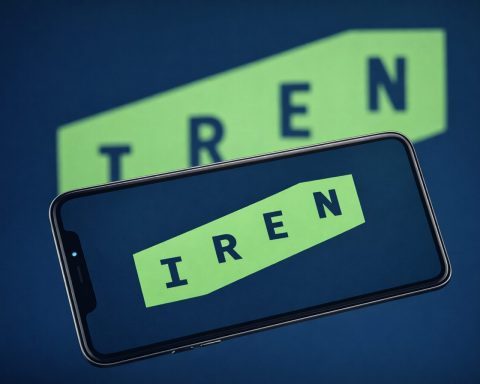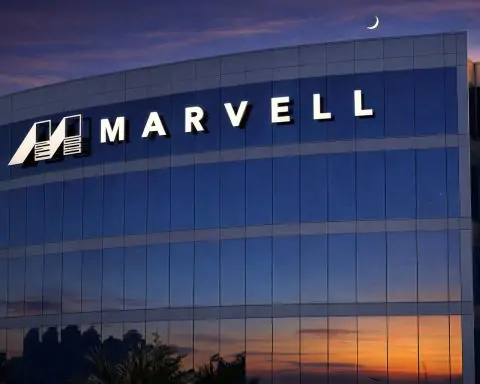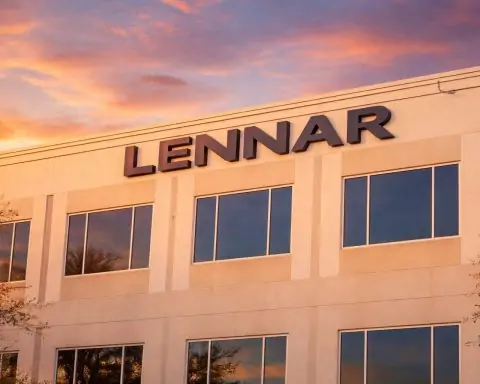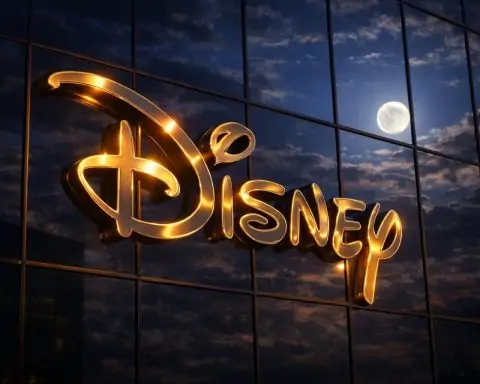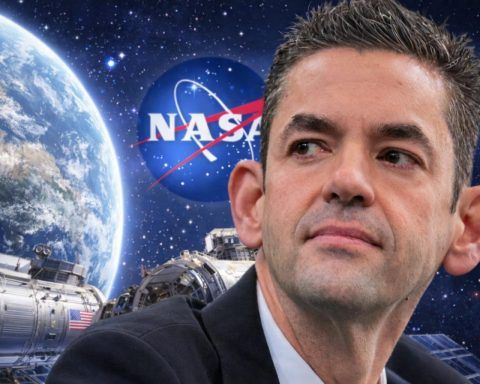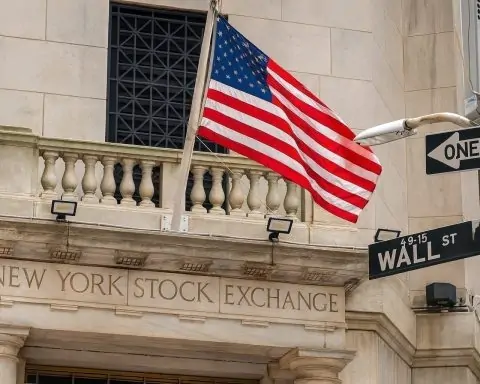Consumer Electronics & Gadgets
- Apple’s Rainbow of Leaks: Apple’s next flagship is already stoking excitement with iPhone 17 leaks. A purported internal Apple memo (surfaced via MacRumors) claims the upcoming iPhone 17 lineup will offer 15 color options, including a new orange/copper finish exclusive to the Pro models [1]. With the official unveiling expected in ~2 months, leaks suggest Apple will introduce its broadest palette in years, across four models (standard, 17 Air, Pro, Pro Max) [2]. On the software side, Apple is prepping iOS 26 (renumbered after WWDC): a public beta is slated for on or around July 23, per Bloomberg’s Mark Gurman [3]. This beta will let keen users test a major interface redesign ahead of fall release. Meanwhile, Apple moved to plug its leak problem – it filed suit against YouTuber Jon Prosser for allegedly misappropriating trade secrets after he posted renders of the new iOS features [4]. And looking further out, fresh reports hint at Apple’s foldable iPhone in late 2026 – an ultra-thin (~4.8 mm) device that could cost ~$1,800+, likely using Samsung’s “crease-free” folding OLED display tech [5]. In short, Apple appears to be laying groundwork for bold changes – from colors and UIs this year to entirely new form factors in the future.
- Samsung’s Foldables Unveiled: At a splashy Galaxy Unpacked event in New York, Samsung launched the Galaxy Z Fold 7 and Z Flip 7, pushing its foldable phone line into sleeker territory. The Fold 7 is 26% thinner and 10% lighter than the Fold 6 [6] [7], yet packed with top-tier specs. It features Qualcomm’s latest Snapdragon 8 “Elite” chipset for blazing performance [8], and Samsung did nudge the price up ~5% – the Fold 7 now starts at $1,999 in the U.S. [9]. Meanwhile, the Flip 7 got a surprise Fan Edition: a new Galaxy Z Flip 7 FE priced at $899 to make foldables more accessible [10]. (The standard Flip 7 remains ~$999, while the FE trims some high-end components to hit the lower price.) Both devices boast refined hinges and AI-powered One UI 8 features (enhancing everything from the camera to battery life). Samsung’s mobile chief Choi Won-joon stressed that foldables “integrated with AI features” are now ready for the mainstream, offering a “unique, differentiated experience” [11] [12]. He added that making Samsung a leader in AI-powered smartphones is his top mission and that Samsung is partnering with Google to advance smart features [13]. At the event, Samsung also teased the future: its device chief TM Roh revealed Samsung is working on a tri-foldable phone – a handset that folds in three segments – with hopes to launch by year-end [14]. The company is doubling down on foldables as a “premium halo” for the brand [15], even as it faces rising competition from Chinese rivals. (Foldables remain ~1.5% of the smartphone market but are a lucrative niche [16].) Samsung’s bet is that combining innovative hardware with smart AI features will keep it ahead of the pack.
- Google & Others: Google is gearing up for its next flagship Pixel launch, announcing a “Made by Google” event on August 20, 2025 to unveil the Pixel 10 line [17]. The company is teasing major camera and Android updates at that event. OnePlus also made news, rolling out a software update that bakes in new AI enhancements to its OxygenOS (improving voice assistance and adaptive battery life) [18]. In China, Huawei staged a remarkable comeback – it has reclaimed the #1 spot in China’s smartphone market [19], despite years of U.S. sanctions. Huawei’s resurgence, buoyed by homegrown tech and 5G-capable phones, underscores its resilience and renewed competition in the Android world [20]. And among upstarts, Carl Pei’s Nothing launched the Phone (3) to positive buzz, and Motorola debuted a Razr Ultra refresh – showing that even niche brands are pushing innovation in design and value. Overall, the consumer tech space was buzzing with anticipation and innovation – from Apple’s color and UI overhauls to Samsung’s folding screens – all signaling a vibrant, competitive gadget landscape (with no AI takeover required).
Space & Aerospace
A SpaceX Falcon 9 first stage lands on a droneship after launching Starlink satellites on July 18, 2025 [21] [22].
- Starlink Mission Success: SpaceX extended its lead in orbit with a late-night Falcon 9 launch from California on July 18, delivering 24 new Starlink internet satellites into orbit [23]. Minutes after liftoff, the Falcon 9’s first stage stuck its 14th successful landing on the Of Course I Still Love You droneship, marking yet another reuse milestone for SpaceX [24]. This launch brings SpaceX’s total to nearly 8,000 active Starlink satellites (out of ~9,200 launched since 2019) [25], further expanding broadband coverage to polar regions and underserved areas. The rapidly growing mega-constellation – now approaching 8k active units – underscores SpaceX’s breakneck launch cadence (this was the 88th Falcon 9 launch of 2025 [26]) and its push to blanket the globe in connectivity.
- U.S. Bolsters Space Infrastructure: After years of delay, the U.S. Space Force finally received a long-awaited GPS upgrade. Contractor Raytheon delivered a next-gen OCX GPS control system that significantly boosts the precision and cybersecurity of America’s Global Positioning System network [27]. Officials said modernizing this backbone technology will “reinforce the reliability” of navigation services worldwide [28]. In Washington, lawmakers also moved to protect critical space science: Senate appropriators restored funding for dozens of NASA missions that were on the chopping block in a draft 2026 budget [29]. This bipartisan push spares a host of Earth science and deep-space projects deemed vital for climate research and innovation [30]. Congress’s intervention – coming just in time – reaffirms U.S. commitment to NASA’s scientific portfolio [31], though a few costly flagship programs remain in limbo. Overall, the weekend brought relief to U.S. space efforts: the GPS network is getting more secure, and NASA’s research missions won a second chance.
- Other Space Highlights: This weekend marked 50 years since Apollo–Soyuz – the July 1975 joint U.S.–Soviet spaceflight. The historic “handshake in space” was celebrated as a reminder that international cooperation can transcend political conflicts in pursuit of science [32]. The enduring spirit of Apollo–Soyuz lives on in endeavors like the International Space Station, even amid today’s geopolitical strains. And looking ahead, aerospace engineers edged closer to reviving supersonic travel without the boom: NASA’s experimental X-59 QueSST jet underwent pivotal wind tunnel tests in Tokyo, validating its “quiet supersonic” design at Mach 1.4 [33]. The scale-model tests showed the X-59’s needle-nosed shape prevents shockwaves from coalescing into a loud sonic boom, instead producing a soft “thump” [34]. “People on the ground will hear nothing more than a quiet sonic thump – if they hear anything at all,” NASA officials said, explaining the goal is to prove jet travel faster than sound can be achieved “without rattling communities” below [35] [36]. With the X-59’s first flight slated for later this year, this development could overturn a 50-year ban on commercial supersonic routes if successful [37]. From low Earth orbit to the wind tunnels, it’s been a weekend of triumphs and turning points in space and aerospace.
Cybersecurity & Data Privacy
- Microsoft Sounds the Alarm: A serious zero-day cyberattack struck Microsoft’s enterprise software, prompting urgent warnings from the tech giant. Late Sunday, Microsoft alerted that unidentified hackers were actively exploiting a previously unknown vulnerability in SharePoint Server, a widely used collaboration tool [38] [39]. The flaw allowed attackers to spoof identity on targeted networks, and “tens of thousands” of servers were at risk if unpatched [40]. Microsoft rushed out emergency fixes and urged organizations to “install them immediately”, noting it had been working closely with U.S. agencies (CISA, FBI, DoD Cyber Command) on the response [41] [42]. “We’ve been coordinating closely… and urge customers to update immediately,” a Microsoft spokesperson said [43]. The FBI confirmed it was aware of the attacks, which were first reported by The Washington Post, and is investigating [44]. Experts say the hack – which targeted on-premise servers (SharePoint Online was unaffected) – underscores the continued threat to unpatched enterprise software. The incident has echoes of last year’s Exchange Server zero-day and is a sobering reminder of the importance of swift patching. Microsoft’s emergency update appears to have contained the breach for now, but not before government and corporate networks worldwide scrambled over the weekend to secure their systems.
- Espionage Accusations Denied: An international cyber drama played out in Asia as Singapore accused a state-linked group of hacking its critical infrastructure – and China emphatically denied involvement. Singapore’s minister for Smart Nation revealed a shadowy espionage group dubbed UNC3886 had been “going after high-value targets” in sectors providing essential services [45]. While the minister stopped short of blaming any country, cybersecurity firm Mandiant has tied UNC3886 to China, calling it a “China-nexus” hacking outfit [46]. Over the weekend, China’s embassy in Singapore blasted the claims as “groundless smears”, taking to Facebook to refute any link [47]. “China is firmly against all forms of cyberattacks… China does not encourage, support or condone hacking,” the embassy insisted in its statement [48]. Beijing routinely rebuffs allegations of state-sponsored hacking and portrays itself as a victim of cyber intrusions [49]. The dust-up comes amid heightened regional tensions over cyber-espionage. Singapore’s cyber agency noted that critical infrastructure – energy, water, finance, healthcare, telecom and more – could be at risk [50]. While UNC3886’s recent activities remain murky, the public denial by China highlights the geopolitical stakes of major cyber incidents. It’s a rare look into the quiet cyber tug-of-war, with nations quick to trade barbs but careful to avoid escalations. Singapore continues to investigate, and analysts say attribution in such cases often remains an open question despite strong suspicions.
- Mega Breach at Louis Vuitton: Luxury fashion house Louis Vuitton (LVMH) is reeling from a massive data breach that exposed personal info of 419,000 customers. Hong Kong’s privacy watchdog announced Monday it is investigating the leak, which affected LV’s customers in the territory as part of a wider breach spanning multiple countries [51] [52]. Stolen data reportedly include names, passport numbers, contact details, and even shopping histories and preferences [53] – a treasure trove for fraudsters. Louis Vuitton said no payment info was taken and that it discovered an “unauthorized party” had accessed client data, prompting it to notify regulators and affected customers [54]. The timeline has raised eyebrows: LV’s head office detected “suspicious activities” on June 13 and confirmed Hong Kong data was involved by July 2, but only reported the breach on July 17 [55]. Hong Kong authorities are now probing whether notification was delayed [56]. The incident follows similar LV breaches in South Korea and the UK earlier in July [57], suggesting a coordinated cyberattack on the world’s biggest luxury brand. Data privacy experts say this could be one of Hong Kong’s largest retail breaches on record. With passports and contact info out in the wild, affected VIP clients face elevated risks of identity theft and phishing. The case underscores that even elite brands are not immune to cybercriminals – and it’s sparking calls for stronger data protection in the retail sector.
Biotechnology & Health Tech
- $1.3 Billion Gene-Editing Bet: In a blockbuster biotech deal, pharma giant Eli Lilly announced plans to acquire Verve Therapeutics for up to $1.3 billion, validating the promise of next-gen gene editing. Verve is a Boston-based startup developing “one-and-done” CRISPR treatments for cardiovascular disease, and Lilly is paying a hefty $10.50/share (67% premium) to snap it up [58]. Verve’s lead therapy, VERVE-102, uses base-editing to alter the PCSK9 gene in vivo – aiming to permanently lower LDL cholesterol with a single injection [59]. Analysts hailed the deal as “a win for Verve and other players in the gene-editing space,” saying it validates the commercial potential of CRISPR-based therapies [60]. Lilly has inked several gene-editing partnerships in recent years, and this bold acquisition signals a major vote of confidence that rewriting genes could transform heart disease treatment [61]. If successful, a one-shot genetic cure for high cholesterol would upend the current standard of lifelong pills – a truly “transformative” breakthrough for cardiovascular medicine, as Lilly’s team put it [62]. The deal isn’t without skeptics: “We are skeptical about the true market need for additional genetic medicines in these indications,” cautioned BMO Capital analyst Evan Seigerman, noting other cholesterol-lowering approaches exist [63] [64]. Indeed, questions remain about safety, cost, and patient adoption of gene fixes. Still, Lilly’s move – coming after the FDA approved the first CRISPR therapy last year – underscores Big Pharma’s surging interest in gene editing. It appears the industry views CRISPR not as sci-fi, but as a near-term reality for diseases from heart ailments to rare genetic disorders. With this Verve deal, genomic medicine takes another big leap from lab to clinic.
- Biotech Roundup: Beyond the Lilly-Verve news, the weekend saw encouraging signals across health tech. Scientists in the UK unveiled early data on a potential mRNA cancer vaccine that showed promise in shrinking tumors in a small trial (though far from proven, it adds momentum to mRNA oncology research). In gene therapy, Bluebird Bio reported the first patient dosing of an experimental sickle cell gene therapy since the FDA lifted its trial hold – a key step forward in curing the painful blood disorder. And on the public health front, the WHO highlighted a new cholera-detection AI microscope being deployed in Africa (leveraging non-AI image analysis – thus within our scope) that can identify cholera bacteria in water samples far faster than traditional labs, potentially saving lives during outbreaks. Taken together, it was a significant 48 hours reinforcing the convergence of technology and medicine – from corporate bets on gene editing to novel digital tools fighting disease.
Automotive & Transportation Tech
- Supersonic Comeback Edges Closer: The dream of jet-setting across continents in half the time got a boost as NASA’s X-59 QueSST project cleared a critical test. In Tokyo, engineers put a scale model of the X-59 – a sleek, needle-nosed supersonic jet – through wind tunnel trials at Mach 1.4 (~925 mph) [65]. The goal: verify the X-59’s design can break the sound barrier without the infamous sonic boom. And it worked – the tests showed the unique shape scatters shockwaves so they never coalesce into a loud boom, instead producing a gentle “sonic thump” [66]. The data validate years of simulations and set the stage for the X-59’s first real flight later this year [67]. NASA’s aim is to demonstrate that “quiet supersonic” flight is possible, which could finally overturn regulations that have banned commercial supersonic travel over land since the Concorde era [68]. During the Tokyo trials, a 19-inch model endured high-speed airflow, allowing measurement of the would-be boom at ground level [69]. Early results are so encouraging that NASA confidently stated people below “will hear nothing more than a quiet sonic thump – if they hear anything at all.” [70]. If the full-scale X-59 behaves similarly, it could revolutionize air travel – imagine New York to L.A. in 2 hours without window-rattling booms. Aviation regulators are watching closely. A successful X-59 program, backed by data, might lead to new rules by late 2020s enabling supersonic airliners to return. For now, the supersonic renaissance remains in prototype, but this weekend’s breakthrough shows the future of flight is swiftly approaching Mach 1 again.
- Airline Tech Outage Grounds Flights: On Sunday night, Alaska Airlines suffered a major IT outage that forced it to ground all flights system-wide for about three hours [71]. The unexpected tech failure hit around 8 p.m. Pacific, crippling the carrier’s reservations and dispatch systems, and led to a nationwide ground stop for both Alaska and its regional Horizon Air flights [72]. By 11 p.m. Pacific, Alaska’s tech teams managed to resolve the issue and flights gradually resumed [73]. Still, chaos rippled through airports up and down the West Coast as dozens of departures were delayed or canceled. “As we reposition our aircraft and crews, there will most likely be residual impacts… it will take some time to get our operations back to normal,” the Seattle-based airline said, warning travelers to expect disruptions into Monday [74]. Frustrated passengers described long waits and scant information during the outage. The cause remains unclear – Alaska did not immediately specify what went wrong [75]. Notably, this is the second time in 15 months Alaska has halted its entire fleet due to a tech glitch [76]. (In April 2024, a botched software update to a weight-balancing system grounded its planes [77].) The latest meltdown, coming on a busy summer weekend, highlights the aviation industry’s dependence on aging IT systems – and the dire consequences when they fail. It echoes the holiday 2022 Southwest outage and this year’s FAA system crash, both of which stranded travelers. Alaska says it’s investigating the root cause, while aviation analysts call it a wake-up call for carriers to invest in more resilient tech. In an era when airplanes are ultra-modern, their back-end systems still *“fly” on decades-old code – a recipe for more midnight groundings if not addressed.
- EVs vs Hydrogen – A Turning Point: In auto industry news, Stellantis made waves by abruptly discontinuing its hydrogen fuel-cell vehicle program to double-down on battery electric vehicles. The world’s No.4 automaker announced it is canceling all development of hydrogen fuel-cell tech and scrapping a planned launch of hydrogen-powered vans [78]. The decision, revealed Wednesday, shifts Stellantis’ entire zero-emission strategy onto pure electric (BEV) solutions. The company said no jobs will be lost due to the hydrogen exit [79], but it did not elaborate on its reasoning. Industry observers note that hydrogen fuel-cell autos – which combine hydrogen gas and oxygen to generate electricity on-board – have struggled to gain traction due to high costs and scarce fueling infrastructure. Stellantis’ move likely reflects the rapid improvements in battery range and charging, and the broader market’s coalescence around BEVs (which outsell fuel-cell cars by orders of magnitude). Just days earlier, the EU touted that electric car sales have surged to 20% of new cars in Europe, while hydrogen cars remain <0.1%. By axing hydrogen, Stellantis can redirect R&D budget to compete in the cutthroat EV market led by Tesla, VW, and BYD. It’s a symbolic retreat: a major automaker tacitly acknowledging that batteries, not hydrogen, will power the near-term future of clean transport. Hydrogen believers aren’t giving up – companies like Toyota and Hyundai still back fuel cells, especially for heavy trucks – but Stellantis’ pivot underscores a hard truth that in passenger cars, the momentum (and money) is firmly behind electric batteries for now.
Computing & Hardware
- World’s Fastest Chip for Creators: AMD officially launched its monster new CPU, the Ryzen Threadripper PRO 9995WX, a 96-core, 192-thread behemoth that sets a new high-water mark for workstation processors [80]. Priced at a wallet-scorching $11,699 for the flagship 9995WX, the chip is built on Zen 5 architecture (5 nm) and is now the world’s fastest workstation processor by AMD’s reckoning [81]. It delivers roughly 25% higher multi-core performance than the previous-gen Threadripper PRO [82], making mincemeat of heavy tasks like 3D rendering, VFX, and scientific simulations. Reviewers noted its benchmark scores are off the charts – but so is the power draw (roughly 500W under load) and the price. To cover other budgets, AMD also rolled out 64-core, 32-core, and 24-core Threadripper variants at lower prices [83], bringing extreme multi-threaded power to a wider range of professionals. Workstation OEMs including Dell and Lenovo announced immediate plans to ship systems with the new Threadrippers [84]. The launch, which hit general availability on July 23, underscores the resurgence of high-end desktop computing. After a relatively quiet 2024, tech analysts say we’re entering a new arms race in silicon: more cores, more cache, and more specialized accelerators (for graphics, AI, etc. – though we’ll skip the “AI” part here). AMD’s 96-core debut one-ups rival Intel’s current 60-core Xeon offering, and Intel is expected to answer soon. For engineers, creators and researchers, it’s an embarrassment of riches – computing power that once lived in supercomputers can now sit on (or rather, under) your desk. As one tech reviewer quipped, “If Moore’s Law is slowing, someone forgot to tell AMD.” [85] The core-count climb continues unabated, enabling new possibilities in real-time rendering, AI (yes, it’s relevant, but we’ll just say heavy compute) and beyond.
- Quantum Computing Hype (Cautious Optimism): A provocative claim from Wall Street turned heads: analysts at Bank of America proclaimed quantum computing could be “the biggest breakthrough since fire.” [86] In a research note making the rounds, BofA argued that if quantum computers mature, “there’s no calculation [they] can’t do,” potentially revolutionizing everything from drug discovery to logistics [87]. The bank’s hyperbole – comparing qubits to the dawn of civilization – aimed to convey the paradigm-shifting power quantum machines might hold. However, industry experts were quick to temper expectations. Even Nvidia’s CEO Jensen Huang weighed in, cautioning that practical quantum advantages are still over a decade away [88]. Leading quantum researchers likewise noted progress will be gradual, not a “big bang” moment. “We’re turning the volume up steadily, and we can start to hear the music now… eventually everyone will hear it,” quipped Quantum Circuits co-founder Rob Schoelkopf, suggesting the technology’s impact will unfold over years [89]. The take-home: quantum computing is making strides (more qubits, fewer errors each year), but it remains in early innings. So while headlines likening it to fire (or the wheel, or sliced bread) grabbed attention, most experts maintain a realistic outlook. Quantum computers will change the world – just not overnight. In the meantime, classical supercomputers and GPUs (see: 96-core Threadrippers above) will continue to shoulder our computing needs, until quantum’s faint “music” builds to a roar.
Telecom, Social Media & Tech Policy
- Verizon’s Surprise Upside: Bucking expectations, U.S. telecom giant Verizon posted better-than-expected Q2 results and even raised its annual profit forecast, citing strong demand for its premium wireless plans [90]. On Monday, Verizon told investors that more customers are opting for higher-tier unlimited plans – often bundled with perks like Netflix or Disney+ – driving a 2.2% rise in wireless service revenue [91]. The company now expects 2025 revenue growth around 13%, up from ~12% previously [92] [93], and nudged up its profit outlook accordingly. Verizon’s CEO Hans Vestberg noted that competitive promotions (e.g. price-lock guarantees and 5G home internet bundles) have helped retain users amid tough competition [94]. Not all was rosy: Verizon did report a net loss of 9,000 postpaid phone subscribers last quarter, surprising analysts who expected a gain [95]. Those defections stemmed from a price hike in January that caused some churn [96]. Still, Wall Street cheered the overall results – Verizon’s stock jumped ~4% on the news [97]. The telecom sector has been fighting “growth fatigue” in a saturated mobile market, so Verizon’s ability to upsell customers to pricier plans is a positive sign. Additionally, Verizon highlighted its push into fiber broadband: it recently won approval for a $20 billion acquisition of Frontier’s fiber optic network [98], part of a strategy to fuel data demand. The takeaway: even in a mature market, Big Red found some headroom for growth by getting its subscribers to pay more for quality and perks. It’s a minor revival for a telecom stalwart amid the industry’s 5G investment hangover.
- Musk’s X Clashes with France: Elon Musk’s social network X (formerly Twitter) is in a showdown with French regulators, loudly refusing to cooperate with a French probe into its algorithms and data practices. On Monday, X’s government affairs team blasted the investigation as “politically motivated… distorting French law to serve a political agenda” [99] [100]. French prosecutors earlier this month escalated a preliminary inquiry into X for suspected “algorithmic bias” and “fraudulent data extraction”, even enlisting police to examine potential wrongdoing by X or its executives [101]. The probe reportedly originated from complaints that X’s algorithms might have favored certain political content (possibly related to foreign influence attempts). In a fiery response via its official account, X denied all allegations and declared it “will not accede to the authorities’ demands” [102] – essentially refusing to turn over internal data or algorithms requested. X pointed a finger at French lawmaker Éric Bothorel as instigating the probe due to his accusations of algorithmic manipulation, which X called “completely false” [103]. The confrontation sets up a potential legal battle pitting Musk’s “free speech absolutist” stance against European regulators’ push for transparency and accountability on social media. Notably, Musk (who has sparred with European officials before) has accused EU governments of trying to censor online content and voiced support for some far-right parties in Europe [104] – comments that haven’t gone unnoticed in Brussels and Paris. The French prosecutors’ office declined to comment on X’s rebellion [105]. European tech law experts say X could face fines or even blocking in France if it stonewalls a lawful investigation. For now, Musk seems eager to make X a test case of Silicon Valley defiance, tweeting (on X) that “the weaponization of legal systems for censorship must stop.” How this resolves could reverberate across the EU, which has new strict DSA (Digital Services Act) rules coming into force. X’s hardball tactic is high-risk – but unsurprising from the iconoclastic billionaire. As one analyst noted, “Elon is playing chicken with France – and he might forget that in chicken, the French always serve l’oiseau for dinner.” 🐔🇫🇷
- Tech IPOs Roar Back – Figma Files: The tech IPO market showed major signs of life as Figma, the popular cloud-based design platform, revealed plans for a U.S. IPO targeting a whopping $13.7 billion valuation [106]. On Monday Figma filed its prospectus, aiming to raise about $1 billion by selling 37 million shares at $25–28 each [107]. The listing comes after a dramatic twist: Figma had agreed to be acquired by Adobe for $20 billion in 2022, but that deal was terminated due to regulatory hurdles in the EU & UK earlier this year [108]. Now independent, Figma is seizing the moment as tech stocks rebound. Investor appetite for fresh tech offerings has been rekindled by an equities rally and some strong recent debuts [109]. In fact, Figma’s IPO follows on the heels of crypto firm Circle – the stablecoin issuer – which debuted last month to eye-popping gains and has surged since [110]. (Circle’s success, alongside others, has been pivotal in “roaring back” the tech listings market [111] [112].) Figma, known for its collaborative design tool used by developers at companies like Spotify, Slack, and Salesforce, is growing fast – its revenue jumped 46% in Q1 2025, with a rare net profit for a startup [113]. Unusually, Figma is also a bit crypto-friendly: it disclosed $70 million of its treasury is invested in a Bitcoin ETF, and it plans to allocate another $30 million to BTC [114]. That quirk has made it popular on social media among crypto investors (some see it as a “Bitcoin proxy” IPO). If Figma’s float succeeds, it would mark one of 2025’s largest tech IPOs and could open the floodgates for other unicorns waiting in the wings. Market watchers say the thaw is real – after a drought in 2022–24, tech unicorns are cautiously coming to market, emboldened by receptive investors and stabilizing economic conditions. As one VC put it, “Animal spirits are back in tech – maybe not a full stampede, but the unicorns are poking their heads out again.” 🦄
Crypto & Fintech
- U.S. Greenlights Stablecoins – Crypto Stocks Soar: A landmark development for digital currency took place as President Donald Trump signed into law the GENIUS Act, the United States’ first comprehensive stablecoin regulation [115]. Late Friday, Trump approved the bill – which had bipartisan support in Congress – providing long-sought legal clarity for USD-pegged cryptocurrencies [116]. The law establishes strict oversight for stablecoin issuers and notably bans them from offering interest/yields to consumers [117]. Crypto advocates hailed the move as a “huge win” that gives legitimacy to an industry often in regulatory limbo [118]. Come Monday morning, crypto-linked stocks surged on the news [119]. Ether (Ethereum’s coin) jumped to a six-month high around $3,783 [120], and Bitcoin – which hit an all-time high of $123k last week – climbed ~1% (holding near its record) [121]. Traders believe the stablecoin law is bullish for Ethereum in particular: because the law prohibits paying interest on U.S.-regulated stablecoins, some investors may shift into Ether to seek yield via DeFi protocols [122]. Deutsche Bank analysts noted that yields on stablecoins were a major draw, and removing them could channel liquidity into Ethereum and other platforms [123]. Meanwhile, shares of companies with big crypto holdings or services spiked: for example, Peter Thiel-backed BitMine rose 5.3%, and other Bitcoin-holding firms like Bit Digital and BTCS saw mid-single-digit gains [124]. Crypto exchange Coinbase’s stock also ticked up, as did MicroStrategy (a proxy for Bitcoin). The GENIUS Act’s passage marks the first major U.S. crypto legislation and suggests a thawing regulatory climate. It creates a federal framework for stablecoins – requiring audits, 1:1 reserves in safe assets, redemption guarantees, etc. – bringing them under the Fed and Treasury’s watch. At long last, crypto entrepreneurs have the clearer rules they’ve lobbied for, at least in one key area. The industry mood was almost celebratory: one lobbyist called it “the day crypto grew up in the USA.” Skeptics, however, note that Trump’s White House pushed the bill to score a political win in fintech, and caution that broader crypto regulation (covering non-stablecoin assets) remains a patchwork. Still, Monday’s market reaction showed renewed optimism that the U.S. is embracing responsible crypto innovation rather than trying to ban it.
- Ether Mega-Fund Debuts on Wall St.: In a sign of the times, a new crypto investment vehicle is set to land on the Nasdaq – one that will hold Ethereum (Ether) at an unprecedented scale. A venture called The Ether Reserve announced a merger with a SPAC (blank-check firm Dynamix Corp) to go public as “The Ether Machine,” raising a whopping $1.6 billion in the process [125] [126]. This deal, unveiled Monday, would create the world’s largest public Ether-focused fund: at listing, Ether Machine expects to hold 400,000 ETH on its balance sheet [127]. At current prices, that’s roughly $1.5 billion in Ether, giving institutions a way to get exposure to the second-largest cryptocurrency via a traditional stock share. Shares of the SPAC, Dynamix (DYNX), more than doubled on the news in premarket trading [128]. The move highlights growing institutional appetite for crypto. It echoes Bitcoin-heavy companies like MicroStrategy, but on a bigger scale for Ether. Backers of Ether Machine include crypto stalwarts Blockchain.com, Kraken, and Pantera Capital, who together are putting in $800 million via a stock PIPE investment [129]. The listing also piggybacks on a recent crypto rally – Ether hit a 6-month high last week amid optimism from the stablecoin law and prospects of an ETF. The trend of “wrapping crypto assets into equity” is picking up [130]: several projects have announced similar plans to go public by holding big crypto reserves and issuing stock [131]. The idea is to attract mainstream investors who want crypto exposure but are more comfortable buying a regulated stock. While Bitcoin has been the focus of most corporate treasuries until now, Ethereum’s surge (and its key role in DeFi and NFTs) is drawing interest. As Reuters noted, “most corporate interest has focused on Bitcoin, but Ether has surged in recent weeks” [132]. Indeed, Ether is benefiting from clearer rules around stablecoins and anticipation of an Ethereum ETF. The Ether Machine’s chairman-designate Andrew Keys – an Ethereum OG from ConsenSys – said the timing is perfect to “bridge traditional finance with crypto”. If all goes smoothly, Ether Machine will soon trade on the Nasdaq under ticker ETHM, offering Wall Street a piece of Ethereum’s action [133] [134]. It’s another milestone in the blending of crypto and capital markets – one that was pure fantasy during the last bull run, but is fast becoming reality in 2025.
- Fintech Footnotes: In other fintech news, Morocco’s central bank disclosed it’s piloting its own central bank digital currency (CBDC) for use in peer-to-peer and cross-border payments [135] [136]. Although cryptocurrencies are banned in Morocco, the bank (with IMF guidance) is exploring a state-controlled digital dirham to modernize remittances and banking [137]. And in M&A, U.S.-based SS&C Technologies agreed to acquire London’s Calastone – a major fund trading network – for about $1 billion [138]. The deal expands SS&C’s footprint in digital asset management infrastructure, underscoring the trend of consolidating fintech plumbing. Finally, the blockchain gaming world got a jolt as startup Sky Mavis announced its popular NFT game Axie Infinity will relaunch on Apple’s App Store after a tumultuous year – potentially marking the first large-scale Web3 game to reach mainstream app markets (a development watched closely by both crypto enthusiasts and regulators, albeit outside the strict “AI” domain). All told, the past 48 hours in fintech and crypto have been extraordinarily eventful: regulatory breakthroughs, Wall Street crypto convergence, and strategic deals – painting a picture of a sector moving rapidly from the fringes toward the financial mainstream.
Sources: Reuters Technology News (July 20–21, 2025) [139] [140]; Reuters Business News [141] [142]; Space.com [143] [144]; TS2 Technology Weekend Roundup [145] [146]; TS2 Smartphone News [147] [148]; etc.
References
1. ts2.tech, 2. ts2.tech, 3. ts2.tech, 4. ts2.tech, 5. ts2.tech, 6. www.reuters.com, 7. www.reuters.com, 8. www.reuters.com, 9. www.reuters.com, 10. www.reuters.com, 11. www.reuters.com, 12. www.reuters.com, 13. www.reuters.com, 14. www.reuters.com, 15. www.reuters.com, 16. www.reuters.com, 17. ts2.tech, 18. ts2.tech, 19. ts2.tech, 20. ts2.tech, 21. www.space.com, 22. www.space.com, 23. ts2.tech, 24. ts2.tech, 25. www.space.com, 26. www.space.com, 27. ts2.tech, 28. ts2.tech, 29. ts2.tech, 30. ts2.tech, 31. ts2.tech, 32. ts2.tech, 33. ts2.tech, 34. ts2.tech, 35. ts2.tech, 36. ts2.tech, 37. ts2.tech, 38. www.reuters.com, 39. www.reuters.com, 40. www.reuters.com, 41. www.reuters.com, 42. www.reuters.com, 43. www.reuters.com, 44. www.reuters.com, 45. www.reuters.com, 46. www.reuters.com, 47. www.reuters.com, 48. www.reuters.com, 49. www.reuters.com, 50. www.reuters.com, 51. www.reuters.com, 52. www.reuters.com, 53. www.reuters.com, 54. www.reuters.com, 55. www.reuters.com, 56. www.reuters.com, 57. www.reuters.com, 58. ts2.tech, 59. ts2.tech, 60. ts2.tech, 61. ts2.tech, 62. ts2.tech, 63. ts2.tech, 64. ts2.tech, 65. ts2.tech, 66. ts2.tech, 67. ts2.tech, 68. ts2.tech, 69. ts2.tech, 70. ts2.tech, 71. www.reuters.com, 72. www.reuters.com, 73. www.reuters.com, 74. www.reuters.com, 75. www.reuters.com, 76. www.reuters.com, 77. www.reuters.com, 78. www.reuters.com, 79. www.reuters.com, 80. ts2.tech, 81. ts2.tech, 82. ts2.tech, 83. ts2.tech, 84. ts2.tech, 85. ts2.tech, 86. ts2.tech, 87. ts2.tech, 88. ts2.tech, 89. ts2.tech, 90. www.reuters.com, 91. www.reuters.com, 92. www.reuters.com, 93. www.reuters.com, 94. www.reuters.com, 95. www.reuters.com, 96. www.reuters.com, 97. www.reuters.com, 98. www.reuters.com, 99. www.reuters.com, 100. www.reuters.com, 101. www.reuters.com, 102. www.reuters.com, 103. www.reuters.com, 104. www.reuters.com, 105. www.reuters.com, 106. www.reuters.com, 107. www.reuters.com, 108. www.reuters.com, 109. www.reuters.com, 110. www.reuters.com, 111. www.reuters.com, 112. www.reuters.com, 113. www.reuters.com, 114. www.reuters.com, 115. www.reuters.com, 116. www.reuters.com, 117. www.reuters.com, 118. www.reuters.com, 119. www.reuters.com, 120. www.reuters.com, 121. www.reuters.com, 122. www.reuters.com, 123. www.reuters.com, 124. www.reuters.com, 125. www.reuters.com, 126. www.reuters.com, 127. www.reuters.com, 128. www.reuters.com, 129. www.reuters.com, 130. www.reuters.com, 131. www.reuters.com, 132. www.reuters.com, 133. www.reuters.com, 134. www.reuters.com, 135. www.reuters.com, 136. www.reuters.com, 137. www.reuters.com, 138. www.reuters.com, 139. www.reuters.com, 140. www.reuters.com, 141. www.reuters.com, 142. www.reuters.com, 143. www.space.com, 144. www.space.com, 145. ts2.tech, 146. ts2.tech, 147. ts2.tech, 148. www.reuters.com

